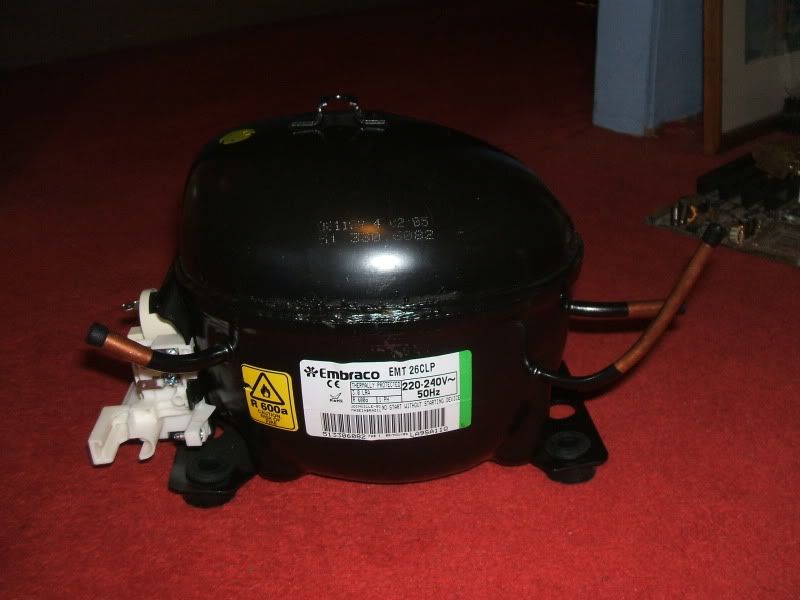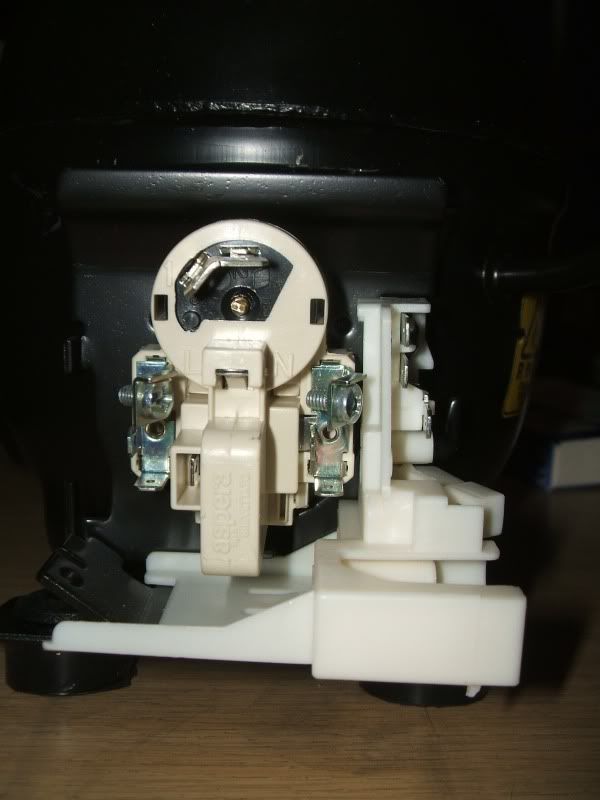

Quote: Originally posted by Chainhit222  |
Quote: Originally posted by Chainhit222  |




 It's not pulling the best the vacuum (I could only get warm
water to boil, no gauge yet) but as you said in the video, it could just be the refrigerant boiling off still. I'll have to make some videos on AlCl3
production, once I make a new youtube account with a user name I didn't pick when I was 13.
It's not pulling the best the vacuum (I could only get warm
water to boil, no gauge yet) but as you said in the video, it could just be the refrigerant boiling off still. I'll have to make some videos on AlCl3
production, once I make a new youtube account with a user name I didn't pick when I was 13.





| Quote: |


 I might
have to try that and then reseal the can so the oil can still flow around, I wouldn't have to worry about sucking solvents and water through it then.
I might
have to try that and then reseal the can so the oil can still flow around, I wouldn't have to worry about sucking solvents and water through it then. I doubt I'd be
able to get it either without tearing the whole thing apart. There was the power cord which led into the little box on the side of it and a white cord
that ran out into the fridge somewhere. The white cord had 4 wires, one earth, one white, brown and blue. the brown and white both connect to the
relay I think it is in different spots and the blue attaches to the motor protector along with a wire from mains.
I doubt I'd be
able to get it either without tearing the whole thing apart. There was the power cord which led into the little box on the side of it and a white cord
that ran out into the fridge somewhere. The white cord had 4 wires, one earth, one white, brown and blue. the brown and white both connect to the
relay I think it is in different spots and the blue attaches to the motor protector along with a wire from mains.



 "I know I've gone outside the lines, but that's okay,
because I like bein' myself"
"I know I've gone outside the lines, but that's okay,
because I like bein' myself"
Quote: Originally posted by psychokinetic  |
Quote: Originally posted by aonomus  |

Quote: Originally posted by Magpie  |
Quote: Originally posted by psychokinetic  |
Quote: Originally posted by spong  |

Quote: Originally posted by watson.fawkes  |
Quote: Originally posted by starch  |
| Quote: |
| Quote: |

Quote: Originally posted by peach  |
Quote: Originally posted by hissingnoise  |



 and pitch black, at
16kpsi).
and pitch black, at
16kpsi).
Quote: Originally posted by peach  |
Quote: Originally posted by peach  |
Quote: Originally posted by peach  |
Quote: Originally posted by peach  |
Quote: Originally posted by peach  |



 ). Your compressor is a different type than mine. Mine is labeled R12 and if I'm
understanding correctly uses a different oil. So these considerations don't apply. Please correct me if I'm wrong in this. Again, thanks and good
night ~food edit
). Your compressor is a different type than mine. Mine is labeled R12 and if I'm
understanding correctly uses a different oil. So these considerations don't apply. Please correct me if I'm wrong in this. Again, thanks and good
night ~food edit
Quote: Originally posted by food  |
 I ended up cutting off the extra blue wire
and wiring the white and brown together. It gets down to 40mbar using water to calculate it, I then put this one and my old one from the shop fridge
in series, they quickly boiled water at room temp and at 13C, giving 15mbar using an online calculator. I knew they could do better than that with
more time so I tried clove oil, it boiled at 64C, assuming a boiling point of 255C the calculator gave a pressure of 4mbar
I ended up cutting off the extra blue wire
and wiring the white and brown together. It gets down to 40mbar using water to calculate it, I then put this one and my old one from the shop fridge
in series, they quickly boiled water at room temp and at 13C, giving 15mbar using an online calculator. I knew they could do better than that with
more time so I tried clove oil, it boiled at 64C, assuming a boiling point of 255C the calculator gave a pressure of 4mbar 


 , and am wondering if any of you have
had experience with replacing factory lube with this silicone oil in fridge pumps. A quick google search suggests silicone oil is preferred for
vacuum applications due to low out gassing. Any incompatibilities if there is still a bit of the factory lube left in and mixed with the new silicone
oil? Any suggestions as to removing the factory oil from the sealed can? Thanks
, and am wondering if any of you have
had experience with replacing factory lube with this silicone oil in fridge pumps. A quick google search suggests silicone oil is preferred for
vacuum applications due to low out gassing. Any incompatibilities if there is still a bit of the factory lube left in and mixed with the new silicone
oil? Any suggestions as to removing the factory oil from the sealed can? ThanksQuote: Originally posted by aonomus  |
Quote: Originally posted by Contrabasso  |


Quote: Originally posted by Mossydie  |





 ). The square
block over the piston, with the cam on it, is where the oil comes up to lubricate it all. The oil doesn't spray out like a hose jet, it bleeds
through.
). The square
block over the piston, with the cam on it, is where the oil comes up to lubricate it all. The oil doesn't spray out like a hose jet, it bleeds
through.









